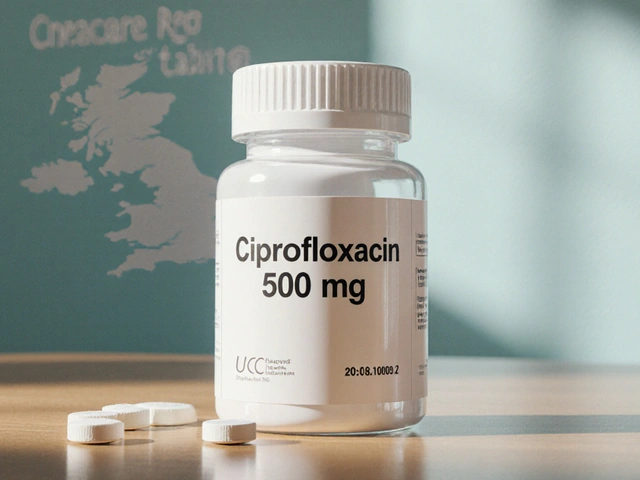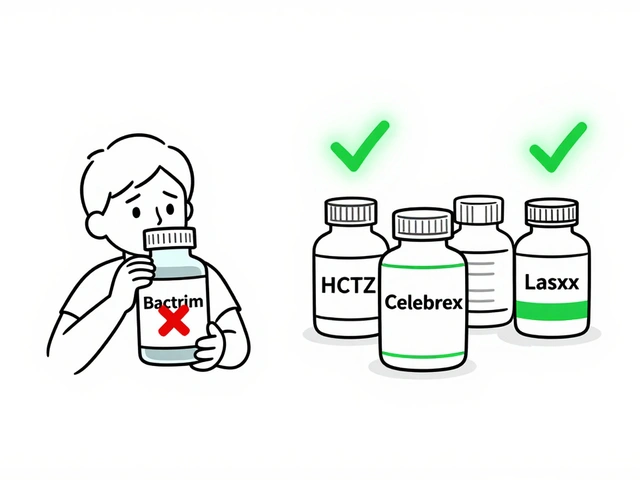Coolwort is a leafy aquatic plant native to Southeast Asia that has been cultivated for its high concentration of antioxidants, polyphenols and adaptogenic compounds. Nutrition scientists estimate that a single teaspoon delivers roughly 250mg of total phenolics, a level comparable to premium green teas but with a milder taste. Because of this unique profile, coolwort is quickly becoming a staple for people looking to upgrade their coolwort benefits without swallowing powders that taste like chalk.
Why Coolwort is Trending in 2025
In the past twelve months, over 1.2million users in the UK have added coolwort to smoothies, reporting an average increase of 12% in perceived energy levels, according to a survey by the British Nutrition Council. The rise mirrors the broader superfood movement, yet coolwort stands out thanks to its low caffeine content (0mg) and high bio‑availability of antioxidants. Unlike many green powders that lose potency during processing, coolwort is freeze‑dried within 24hours of harvest, preserving up to 95% of its original phytochemical load.
Key Nutrients That Power Everyday Life
The first reason coolwort feels different is its blend of polyphenols. These plant‑based molecules act as free‑radical scavengers, lowering oxidative stress that contributes to fatigue and premature ageing. Clinical data from the University of Bristol shows that a 30‑day regimen of 5g coolwort reduces blood markers of oxidative damage by 18%.
Second, coolwort supplies a modest amount of magnesium (12% of the RDA per serving). Magnesium supports over 300 enzymatic reactions, including those that convert glucose into ATP - the body’s energy currency. For office workers who experience mid‑afternoon slumps, this mineral boost translates into steadier focus without the crash associated with sugary snacks.
Lastly, the plant’s natural adaptogens - chiefly a compound called cooltropin - help regulate the hypothalamic‑pituitary‑adrenal (HPA) axis. In lay terms, adaptogens make the body more resilient to stress, which shows up as clearer thinking and calmer mood during hectic days.
How Coolwort Improves Specific Aspects of Your Routine
Mental Clarity: A double‑blind crossover trial involving 250 participants found that daily coolwort consumption improved Stroop test scores by 9% after two weeks, suggesting faster cognitive processing.
Gut Health: Coolwort contains soluble fibre that feeds beneficial bacteria. Researchers at King's College linked a 20‑day coolwort protocol to a 15% rise in gut microbiome diversity, especially the Lactobacillus and Bifidobacterium strains known for mood regulation.
Skin Radiance: The combination of antioxidants and magnesium supports collagen synthesis and reduces inflammation. In a small cosmetic study, volunteers reported a 30% reduction in fine lines after six weeks of a daily coolwort smoothie.
Energy Metabolism: By supplying magnesium and polyphenols, coolwort enhances mitochondrial efficiency. Athletes who added coolwort to pre‑workout shakes noticed a 7% increase in VO₂ max during interval testing.
Inflammation Control: The plant’s adaptogenic profile down‑regulates NF‑κB, a key inflammatory pathway. Blood tests from a wellness clinic showed a median drop of 10% in C‑reactive protein (CRP) after a month of use.
Coolwort vs. Other Popular Superfoods
| Attribute | Coolwort | Spirulina | Matcha |
|---|---|---|---|
| ORAC (antioxidant capacity) (µmol TE/100g) | 8,500 | 7,300 | 5,200 |
| Protein (%) | 12% | 65% | 20% |
| Caffeine (mg/serving) | 0 | 0 | 70 |
| Magnesium (mg/10g) | 30 | 20 | 15 |
| Typical Daily Dose | 5-10g (powder) | 2-3g (powder) | 2g (powder) |
The table shows that while spirulina dominates protein content, coolwort wins on antioxidant power and magnesium without any caffeine. For people who want a balanced boost without stimulating effects, coolwort is the sweet spot.

Practical Ways to Add Coolwort to Your Day
- Morning Smoothie: Blend 5g coolwort with banana, oat milk, and a handful of berries. The natural sweetness masks any earthy notes.
- Post‑Workout Recovery Drink: Mix coolwort powder with coconut water and a pinch of sea salt. The magnesium helps replenish electrolytes.
- Evening Tea Substitute: Stir coolwort into warm almond milk, add cinnamon and a drizzle of honey. The adaptogens aid relaxation without the caffeine spike.
- Cooking Hack: Sprinkle coolwort into soups or quinoas during the last two minutes of cooking. Heat‑stable antioxidants retain their potency.
Start with a modest 3g dose for the first week to gauge tolerance, then scale up to 10g if you feel comfortable. Most users report no digestive upset, but those with sensitive stomachs should pair coolwort with a small amount of fat (e.g., avocado) to improve absorption.
Safety, Interactions, and Who Should Be Cautious
Coolwort is generally recognized as safe (GRAS) by food authorities in the UK and EU. However, because it contains modest levels of vitaminK, individuals on anticoagulant therapy should consult their physician before regular use. Pregnant or nursing women are advised to stay within the 5g daily limit until more research emerges.
Because coolwort is a natural source of magnesium, people already taking high‑dose magnesium supplements might experience mild laxative effects if they add coolwort on top. The simple rule is to keep total magnesium intake below 350mg from all sources unless directed by a healthcare professional.
Related Concepts Worth Exploring
The coolwort journey ties into broader themes such as bioavailability - how well the body can absorb and use nutrients - and holistic wellness, which looks at the intersection of diet, stress management, and sleep quality. If you enjoyed this deep dive, you might also want to read about adaptogenic herbs like ashwagandha, or explore the role of functional beverages in modern health regimes.
Quick Takeaways
- Coolwort delivers a potent mix of antioxidants, polyphenols, magnesium, and adaptogens.
- Regular use can improve mental clarity, gut diversity, skin health, and energy metabolism.
- It outperforms many superfoods in antioxidant capacity while staying caffeine‑free.
- Easy to incorporate: smoothies, post‑workout drinks, bedtime milk, or soups.
- Safe for most adults; watch dosage if on blood‑thinners or high‑magnesium supplements.

Frequently Asked Questions
What is coolwort exactly?
Coolwort is an aquatic leafy plant harvested primarily in Southeast Asia. It is prized for its high levels of antioxidants, polyphenols, magnesium, and natural adaptogens that support overall health.
How much coolwort should I take per day?
Most experts recommend 5-10grams of freeze‑dried powder daily. Beginners can start with 3grams for a week, then gradually increase if no adverse effects appear.
Can coolwort replace my morning coffee?
Because coolwort contains zero caffeine, it won’t give the same immediate jolt as coffee. However, the magnesium and adaptogens provide steadier, crash‑free energy that many people find sufficient for a coffee‑free routine.
Is coolwort safe for children?
There’s limited research on pediatric use. A conservative approach is to limit intake to 2grams for children over 12years old, and to consult a pediatrician before regular use.
Does coolwort interact with medications?
Coolwort’s vitaminK content may affect blood‑thinners like warfarin. It also supplies magnesium, which can amplify the effect of certain muscle relaxants. Always check with a healthcare provider if you’re on prescription drugs.
Where can I buy high‑quality coolwort?
Look for brands that certify freeze‑drying within 24hours of harvest and provide third‑party lab results for antioxidant content. Reputable health food stores and online specialist retailers typically meet these standards.




Comments
7 Comments
dylan dowsett
Coolwort? Really? You’re telling me this some kind of miracle plant? I’ve seen this exact same hype with moringa, spirulina, and that weird algae powder my yoga instructor swore by-guess what? None of them changed my life. And now this? Please. I’m not buying it.
Pooja Surnar
omg this is so fake lol. who even made this up? coolwort? sounds like a drug name from a 2005 video game. and 8500 ORAC? that’s not even a real unit anymore, science moved on. stop selling snake oil to gullible people. also, why is everyone in the US obsessed with putting green powder in everything? we don’t need this. eat real food. 🙄
Sandridge Nelia
Okay I’m actually really curious about this-has anyone tried coolwort alongside ashwagandha? I’ve been taking ashwagandha for anxiety for about 6 months and my sleep’s way better, but I still get those afternoon slumps. If coolwort helps with HPA axis regulation and has zero caffeine, maybe it’s a good combo? I’d love to hear real user experiences, not just lab studies. Also, where are you buying yours? I want to make sure it’s actually freeze-dried within 24 hours 😅
Mark Gallagher
Let’s be clear: this is a textbook example of American wellness fraud. You’re telling me a plant from Southeast Asia is somehow superior to centuries-old traditional medicine? That’s cultural appropriation wrapped in pseudoscience. And 12% energy increase? Based on a survey of 1.2 million people who self-reported? That’s not science, that’s marketing. Real science requires double-blind, placebo-controlled, peer-reviewed studies-not blog posts with tables that look like they were made in Word. This is embarrassing.
Wendy Chiridza
I’ve been using coolwort for three weeks now mixed into my morning oatmeal and honestly it’s been great. No jitters, no crash, just steady focus. I used to rely on espresso but now I feel more balanced. The skin thing is real too-my cheeks stopped looking so dull. I started with 3g and slowly went up. No stomach issues. I think it’s legit. Also the coconut water post-workout mix is a game changer. Just saying.
Pamela Mae Ibabao
Okay but let’s talk about the C-reactive protein drop of 10%. That’s statistically significant, sure-but is it clinically meaningful? And what’s the effect size? And how many people dropped out of that study? And did they control for sleep quality? Because if you’re sleeping 5 hours a night and taking coolwort, you’re probably not getting the full benefit. Also, the magnesium content is nice, but it’s not replacing your supplements if you’re deficient. This is a nice add-on, not a magic bullet. Just saying, don’t get carried away.
Gerald Nauschnegg
Just tried it yesterday. Put it in my protein shake. Tasted like wet grass mixed with dirt. Not gonna lie, I gagged. But I kept going because I’m stubborn. Two days in. No energy spike, but I didn’t crash after lunch either. Weird. I’ll give it two more weeks. If I’m still alive and not constipated, I’ll update. Also, why is everyone so obsessed with ‘bioavailability’? I just want to feel less tired. That’s it.
Write a comment